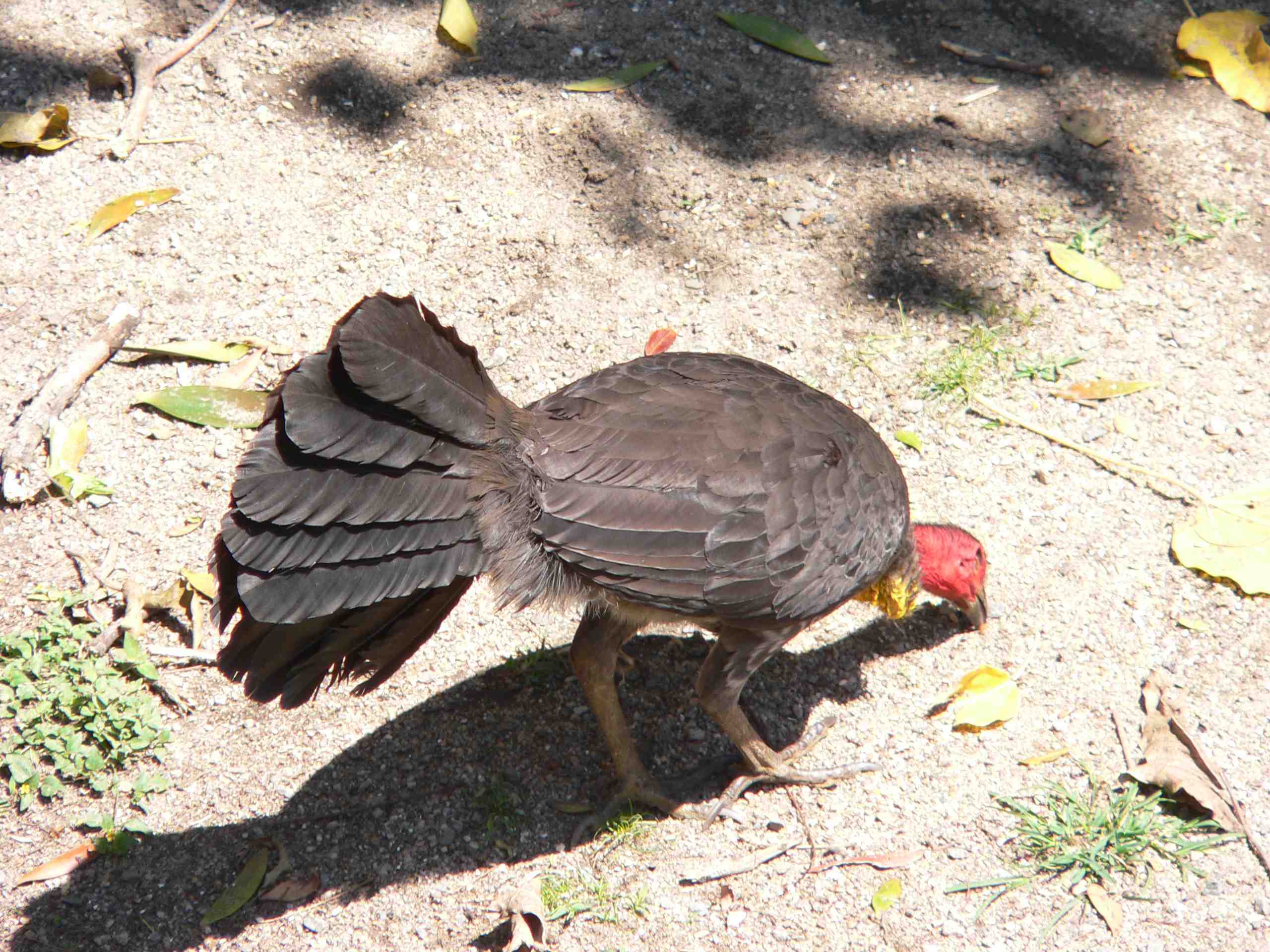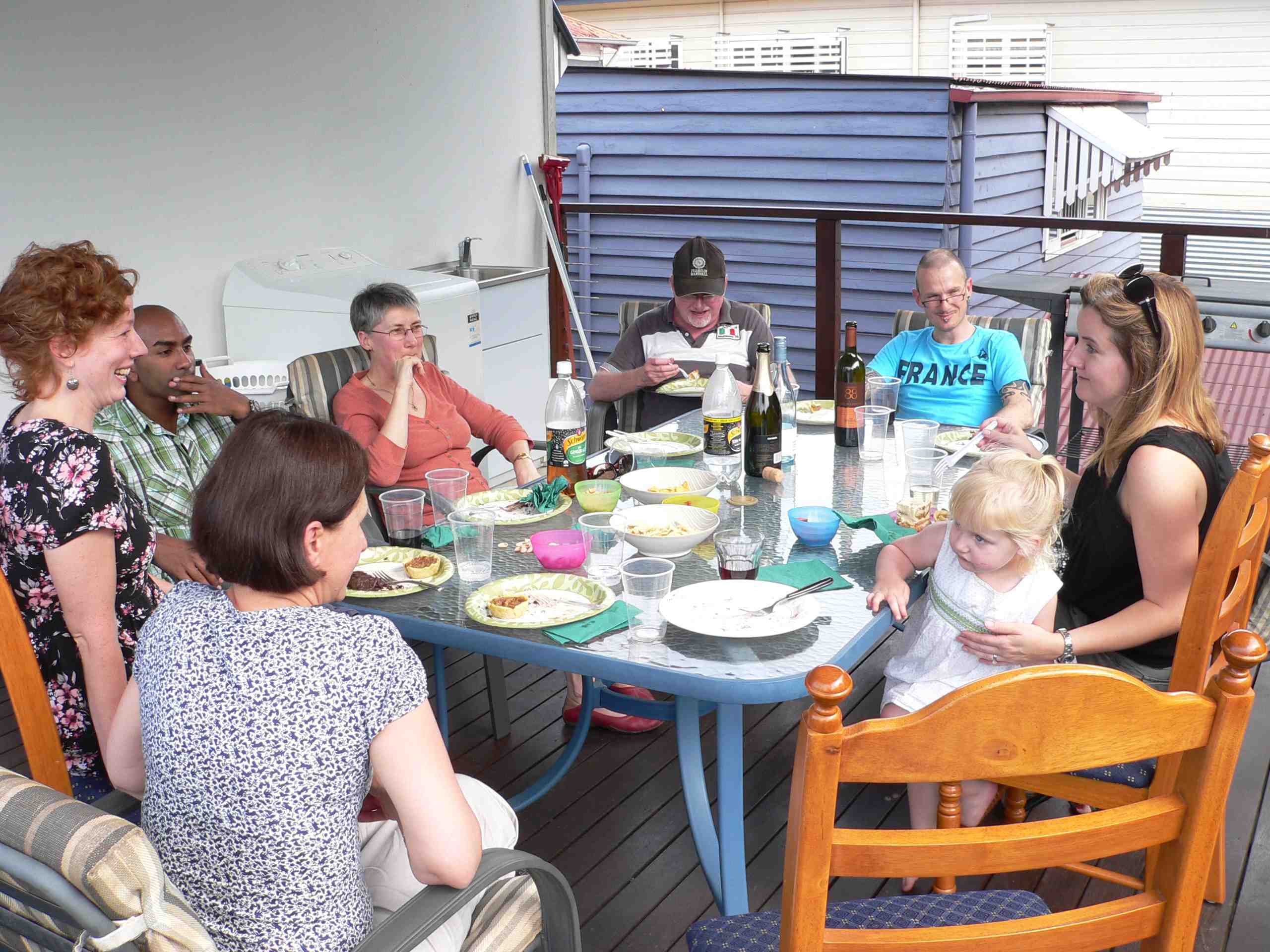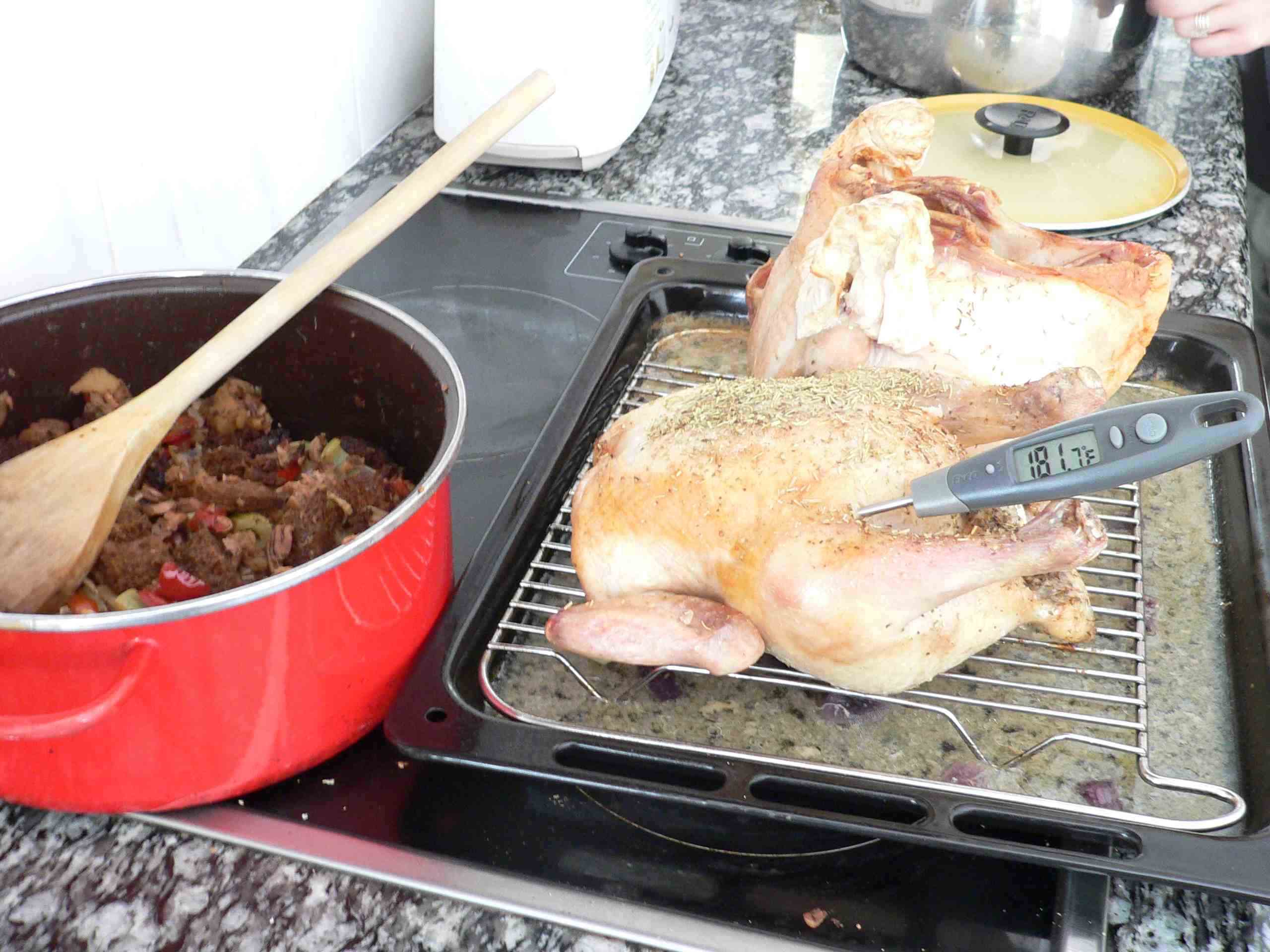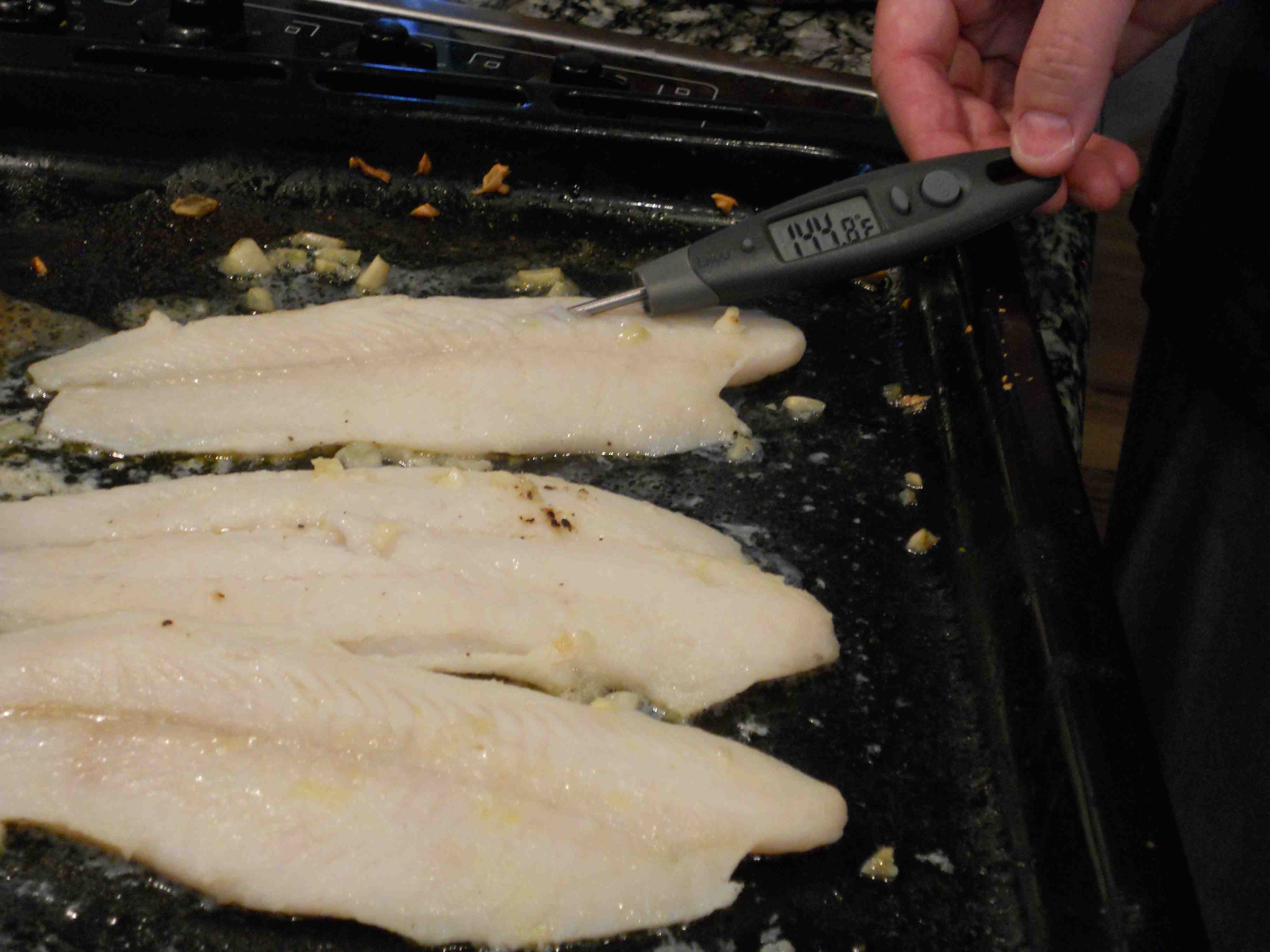I’ve got turkeys wandering around the yard but I can’t buy one at the grocer or butcher.
Paul the butcher in Annerley, Brisbane, Australia, took pity on me and gave me – gave me for free – a frozen turkey breast he had in his freezer.
“If it sucks, throw it out.”
 I threw it out.
I threw it out.
Paul says he does a lot of turkeys for Christmas, but Thanksgiving just isn’t an Australian thing.
And it’s sorta weird, with spring strawberries and asparagus abundant rather than the traditional North American harvest foods.
Was even weirder prepping food all morning while Amy played with Sorenne and listened to the K-State football game on Internet radio.
But, we continued our tradition and had some 15 Aussies over for a Canadian Thanksgiving feast.
And instead of North American football, there was the 2011 Rugby World Cup quarterfinals: yeah Wales (suck it Ireland); France will lose next weekend to Wales; yeah Australia (suck it South Africa), and in a few hours it should be yeah New Zealand (suck it Argentina).




.jpg) (regardless of the standards applied by the farmer and butcher). Cooking an intact piece of meat on the surface is sufficient to kill any such bacteria. However, when a piece of meat is minced, contamination on the surface can be spread to any part of the product. … Irish mince is not irradiated, so the process of cooking through is crucial. E. coli infection can be fatal, so anyone who wishes to eat rare or raw minced beef in Ireland should take note of these facts.”
(regardless of the standards applied by the farmer and butcher). Cooking an intact piece of meat on the surface is sufficient to kill any such bacteria. However, when a piece of meat is minced, contamination on the surface can be spread to any part of the product. … Irish mince is not irradiated, so the process of cooking through is crucial. E. coli infection can be fatal, so anyone who wishes to eat rare or raw minced beef in Ireland should take note of these facts.”.jpg) brown and an instant-read thermometer inserted into the meaty part of the thigh reads 155 to 165 degrees.”
brown and an instant-read thermometer inserted into the meaty part of the thigh reads 155 to 165 degrees.”.jpeg) and why Canadians and Americans tell people to use a
and why Canadians and Americans tell people to use a.jpg)
 well on the basa fillets I baked for dinner along with sweet potato and corn on the cob. Future improvement: list on packaging whether the thermometer is tip-sensitive or not. How’s a consumer to know?
well on the basa fillets I baked for dinner along with sweet potato and corn on the cob. Future improvement: list on packaging whether the thermometer is tip-sensitive or not. How’s a consumer to know?  I used to cook. And then I met Doug. And all the food safety that I quickly learned scared me.
I used to cook. And then I met Doug. And all the food safety that I quickly learned scared me. For dinner tonight I opted for pre-made raw meatballs to accompany the linguine because having a small child around is not conducive to getting up to your elbows in meat (especially when she’s screaming, “Mooooooom! Milk!”). I did my best to make a well-done meatball (I mean, who doesn’t love crispy meatballs), but how are mere mortals supposed to see if something’s cooked just by using our naked eyeballs?
For dinner tonight I opted for pre-made raw meatballs to accompany the linguine because having a small child around is not conducive to getting up to your elbows in meat (especially when she’s screaming, “Mooooooom! Milk!”). I did my best to make a well-done meatball (I mean, who doesn’t love crispy meatballs), but how are mere mortals supposed to see if something’s cooked just by using our naked eyeballs? Come on, Australia. Food safety is not just an American thing. I’m tired of worrying whether I’ll kill our 2 ½ year old over dinner. And I miss my favorite food safety expert’s voice in my ear reminding me to use a meat thermometer.
Come on, Australia. Food safety is not just an American thing. I’m tired of worrying whether I’ll kill our 2 ½ year old over dinner. And I miss my favorite food safety expert’s voice in my ear reminding me to use a meat thermometer. medium, and one well done. As one of the chefs uses a tip sensitive digital thermometer to check temperatures, Chef Graham Elliot comments something along these lines – every time he uses the thermometer, he lets those juices flow out.
medium, and one well done. As one of the chefs uses a tip sensitive digital thermometer to check temperatures, Chef Graham Elliot comments something along these lines – every time he uses the thermometer, he lets those juices flow out..jpg)
 steak. If they feel very similar, that’s an indication of a rare steak.
steak. If they feel very similar, that’s an indication of a rare steak.